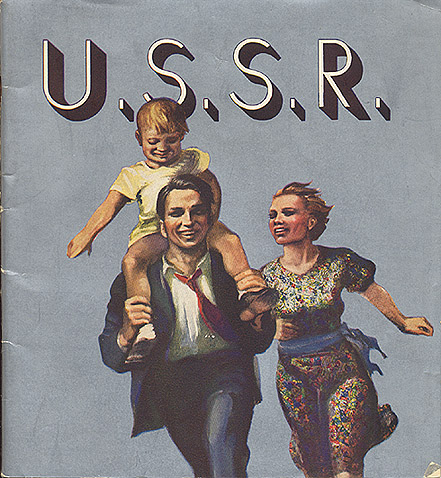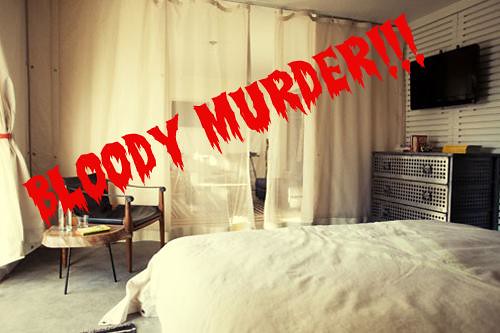Thana is a shy mute girl who works as a seamstress in New York's garment district with a few other equally attractive young women who run the gamut of typical male fantasies: a preppy blond, a brunette, and a black haired foul-mouthed tough girl with an adorable Brooklyn accent. An early scene shows Thana, the blond and the tough chick walking to the subway after work and having to deal with leers and comments from blacks, hispanics and an Italian guy who says something like, "Hey, baby come sit on my face!" With dialogue like this you know this film will pull no punches and the viewer is in for some seriously low brow entertainment.

Thana breaks off from her co-workers on her way home and along the way is dragged into an alley and raped at gunpoint by some greasy haired dirtbag in a mask. She makes it home after the attack a disheveled mess with her blouse still unbuttoned. Unfortunately for Thana her misfortune is not yet over. A few minutes after Thana arrives home a burglar makes his presence known and demands to know where the money is. Thana, mute and in a rather fragile state after the brutal rape is unable to articulate anything but fear in the form of a few squeaks. The robber then decides to have his way with her and at this point Thana doesn't even put up a struggle. While he is raping her and has dropped his gun, Thana grabs a small object and bashes his head with it. While the burglar recoils in pain she brains him effectively with an iron. After contemplating her worsening situation she puts his body in her tub, dismembers it and stores the bagged remains in her fridge. Over the course of the film she gradually gets rid of the burglar's body parts in a myriad of ways, including feeding some to her kooky landlady's dog.
Unlike other rape/revenge movies, the rape scenes are not especially gratuitous and the movie features no nudity. Those movies which engage in such graphic detail seek to draw the viewer into a strange paradox whereby one can get off sexually from watching a [simulated] rape but redeem themselves by rooting for the protagonist in the orgy of pornographic violence which is sure to follow. An example of this type of rape/revenge film is Billy Jack, where all the female characters are ultimately helpless and need the stoic Cherokee Billy Jack to protect them from redneck savagery. As I mentioned, Ms. 45 is certainly not this type of film but that doesn't make it's message any less perverse.
In addition, the violence is not particularly gory, but what it lacks in blood and guts in makes up for in body count. While I didn't explicitly keep track, I would assume that Thana kills well over a dozen men in the course of the film. The one exception to the lack of gore comes in a scene where Thana, after succesfully dismembering the burglar, hears a noise from her bathroom and upon going to investigate the viewer is treated to a closeup of pink entrails spewing from the tub drain. Great stuff! In some ways, though, this conservative sprinkling of gore makes it more effective, much like the blood filled toilet scene in The Conversation.
While disposing of a bag of the buglar's body parts, some Gino doofus follows Thana to chat her up but she panics, thinking he's going to rape her, and puts a bullet through his forehead. From this point on Thana is ready for a rampage and begins going out purposely to antagonize men to hit on her so she can blow them away. She sheds her cute but reserved style for a New Wave vampiness of red lipstick and black leather. It would also appear that the outfit she dons when she kills a couple of gang members in a park (it seems she stumbles through an alternate ending to The Warriors) is the basis for the girls in Robert Palmer's 'Addicted to Love' video. Consider:

Thana as Femme Fatal[e]

'Addicted to Love' girl
But the costumes or murders certainly don't end here. In addition to the burglar/rapist, guido idiot, and a few gangbangers, she shoots an obnoxious fashion photographer, an oil sheik and his driver and almost wastes some poor sap she meets in a bar who won't stop talking about his failed marriage, however when the gun jams he grabs it from her and promptly takes his own life on a park bench. Great stuff!

The final scene of the movie is at a Halloween party thrown by the fashion designer for whom Thana works. The designer initally comes off as a typical fag (he's a fashion designer in early 80s NYC for goodness sake!) but eventually the viewer learns that he has intentions on Thana and is therefore either a hetero queen or bisexual (i.e. a pervert). Thana goes as his date to the party dressed as a nun while he goes as Dracula. Here the symbolism gets a bit obvious with the sexual repression of Thana and the parasitic nature of men laid out in open for the benefit of the most oblivious viewer. The designer whispers sweet nothings to Thana during the party and she eagerly follows him upstairs. During the initial stages of seduction Thana whips out her pistol and kills the designer. She then descends the stairs to the party and starts randomly shooting every man she sees. She even shoots some dude in drag who desperately tries to pass as an authentic member of the Sisterhood. The massacre scene is slowed down and is over ten minutes. It's great to see all the partygoes bedecked in their costumes huddling together in fear instead of just getting the hell out of there like any normal person. Right before Thana kick starts her Halloween man massacre, the party band is laying down a seriously funky jazz track which is very reminiscent of the free form jazz experiments of No Wave musicians during that time, especially Lydia Lunch and James White & The Blacks. Personally, I think it would have been better if this track continued to play even as the band scatters in fear. The track that plays instead sounds like one of those Halloween spooky sound records slowed down to half speed. Thana's killing spree is finally ended when her brunette co-worker stabs her in the back with a cake knife. Again we get hit over the head with the obvious symbolism and the look on Thana's face as she dies is one of pure shock at the betrayal from one of the Sisterhood. Clearly Thana wasn't just doing this out of revenge for the rapes she endured, but for the good of all Womankind.
The message of the film is not simply about sex being used as a weapon of repression but the inability of humans to overcome horrific events. As such, the view of humanity is rather pessimistic and sees people as weak and incapable of surmounting the brutality of others. We can assume that Thana, as a mute, may have had very limited contact with men in regards to having relationships. We might even assume that prior to the rapes she was a virgin. As such, while her campaign of revenge is certainly sexy from an aesthetic perspective (handguns, black leather, red lipstick) it is not supposed to be self-affirming. The viewer can root for her when she kills most of her victims (she's just taking out the trash) but the scene with the sad sack who eats a bullet after her gun jams is meant to show she's gone to far. The final scene shows her as a complete maniac who, Valerie Solanas-style, wants to eradicate all men from the planet. There is also a subplot where the viewer is lead to believe she has mercilessly killed her landlady's dog. The purpose of all this is to show that Thana is a desperate, delusional and damaged person, in other words, a victim. That's right, nothing to see here, just another victim. Just another client for the Therapeutic State. Of course, we should keep in mind that this is simply entertainment and for that this movie is the bee's knees.






















